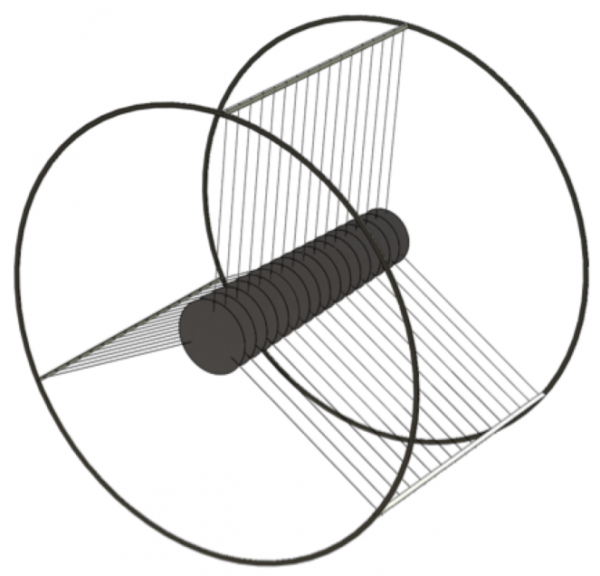MuonStoppingTargetIntro
Introduction
The muon stopping target is placed in the path of incoming muons from the transport solenoid. The goal for the stopping target is to stop a large number of muons, to give the experiment as many opportunities to observe the rare decays of muons as is reasonably possible. The stopping target also must be constructed in a way to not obstruct the outgoing electrons from the muon decays.
Requirements
- For low Z nuclei, the sensitivity to electron conversion is roughly proportional to Z, therefore Z should be maximized.
- In order to avoid backgrounds (mainly from radiative pion capture), the measurement window when the search for the conversion electrons commences in the detectors should start on the order of 700 ns after the proton pulse. For low Z nuclei, the capture rate scales roughly with Z4, therefore Z should not be too large.
- A potential background can come from radiative muon capture, via the reaction
The photon can have a maximum energy (for example in the case where the neutrino energy is zero) in the vicinity of the conversion electron energy. The photon can pair produce a fake conversion electron in the target or nearby materials. With the proper choice of the target, the mass of the daughter nucleus exceeds that of the parent nucleus, m(Y*) > m(X) , pushing the photon energy below the conversion electron energy. An energy difference m(Y*) - m(X) greater than 2 MeV is desirable.
- The target material should be readily purified and chemically stable to avoid muon stops in foreign nuclei. In particular, contaminants that produce higher conversion electron energies can pose a background threat from electrons produced by muon decay in orbit and should be avoided.
- Ideally the target material is self-supporting.
Additional details are available in [1].
Technical Design
The target for the first run of the Mu2e experiment will be pure aluminum, which satisfies all of the above criteria. The electron conversion energy is 104.97 MeV. The lifetime of muonic aluminum, 864 ns, is relatively long, enabling the use of a delay of 700 ns for the muon beam flash to die out before taking data .
The baseline design of the muon stopping target consists of 34 aluminum foils of thickness 100 μm with radii 75mm, as illustrated in Figure 1.
The foils are placed with an equidistant spacing of 25 mm along the axis of the detector solenoid in the center of the muon beam, with the center of the target assembly at a Z position of 5871 mm that is 4329 mm in front of the center of the tracker. Because of the diffuse nature of the muon beam a significant number of muons can strike the structure supporting the stopping target, producing DIO electrons at large radius where the acceptance for reconstruction in the detector is high. Because the endpoint energy of the DIO spectrum decreases for higher Z materials, and because the lifetime of the muons in muonic atoms decreases for higher Z materials, the supports must be constructed from high Z materials. Each foil of the stopping target is mechanically fixed by three tungsten wires that are attached to a support structure located near the inner surface of the detector solenoid. The baseline design employs 3 mil diameter wire to support the target foils. Simulations show that the tungsten has negligible effect on the energy straggling of conversion electrons.
[1]R. Miller, “Requirements & Specifications WBS 5.5 – Muon Stopping Target,” Mu2e-doc-1437
